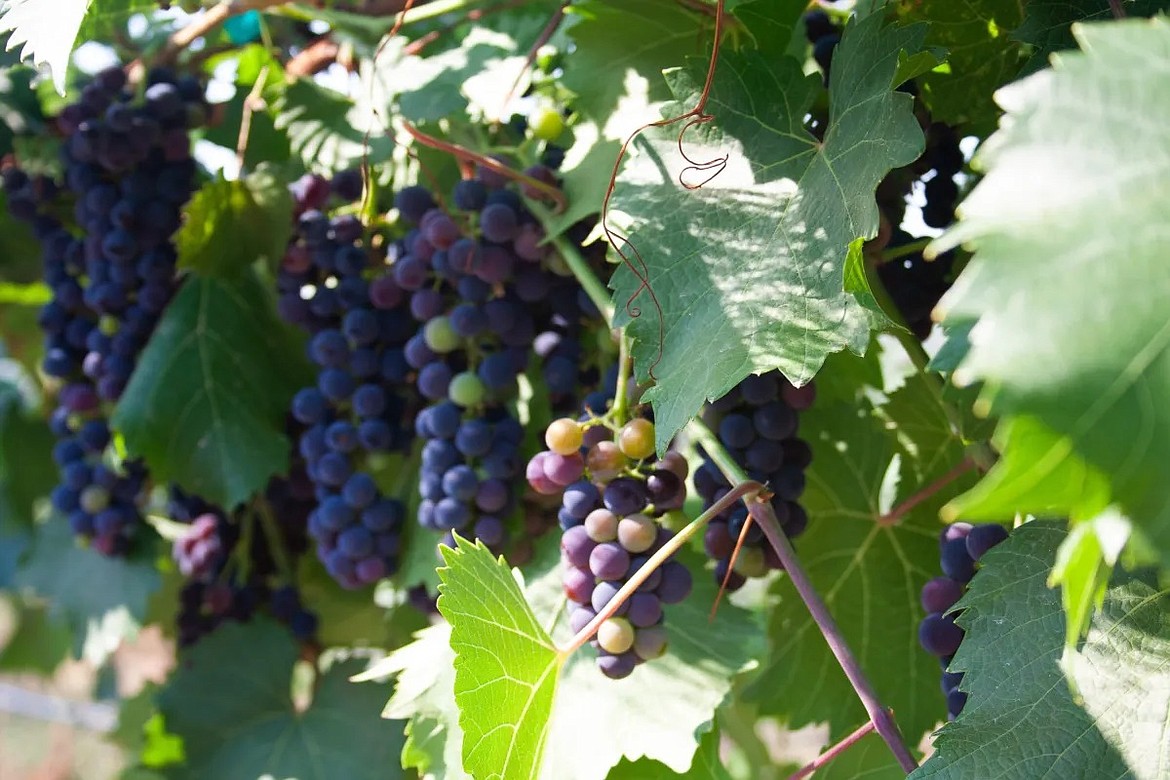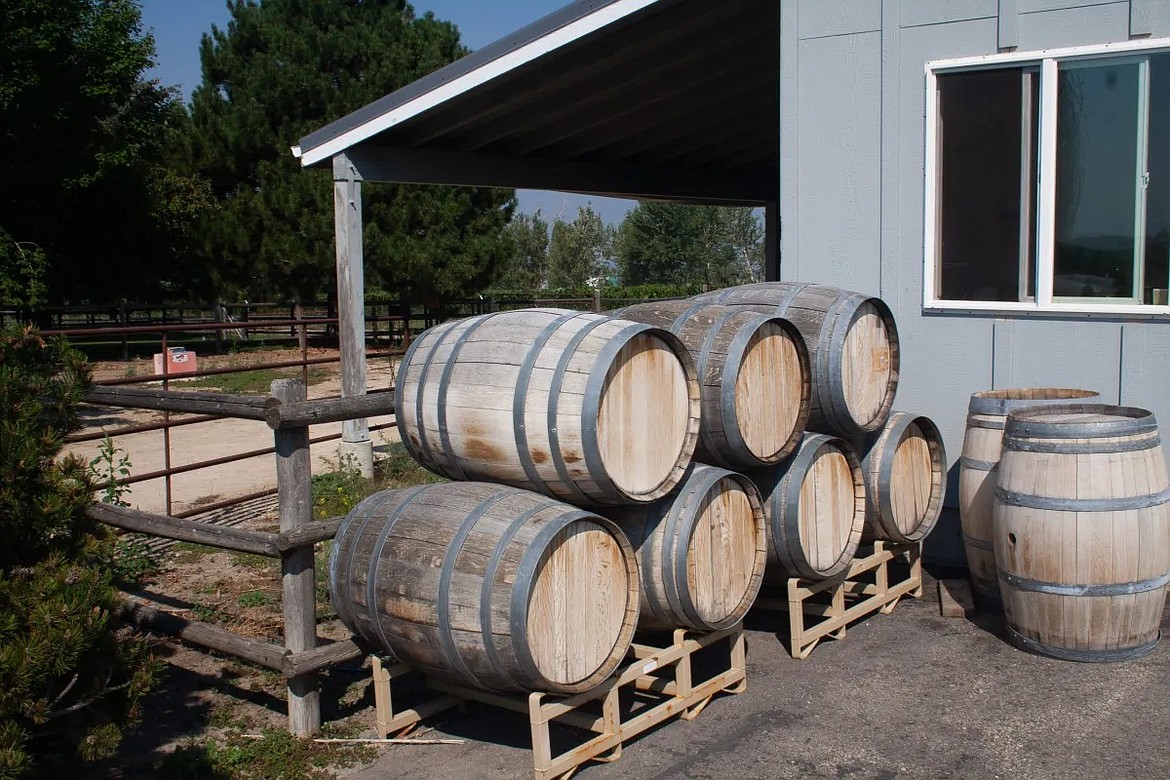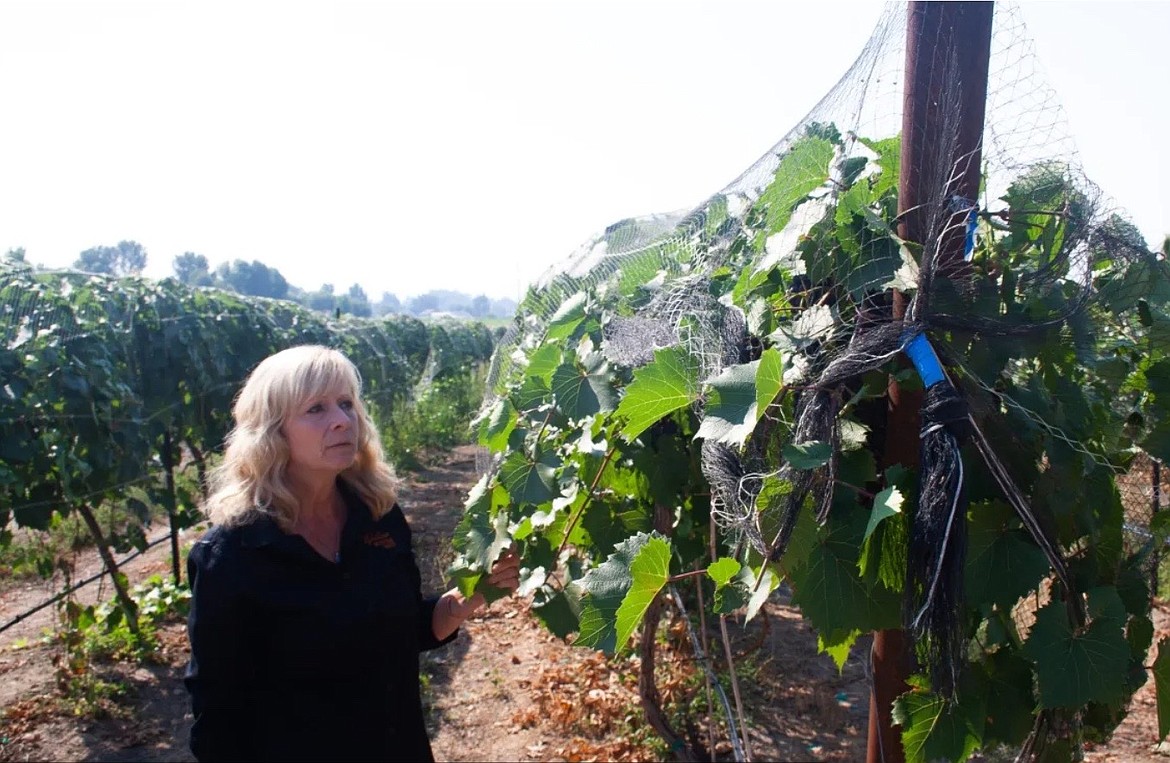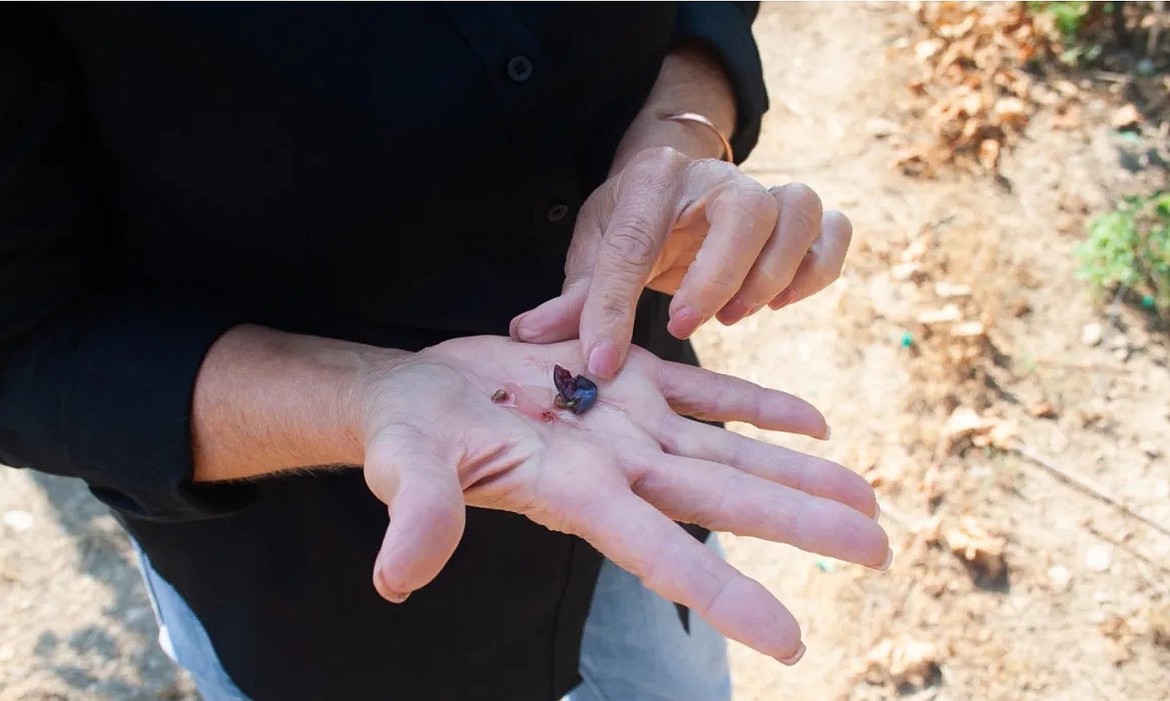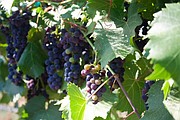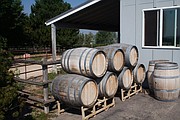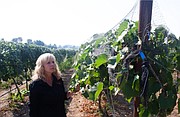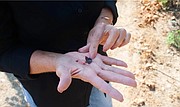Montana wants to be the next wine country
It was a warm morning in early September, and Roxann McGuire was walking through the crop rows at Willow Mountain Winery, strategically sampling grapes off the vines. With every grape she tasted, she was looking for the signature combination of acid and sweetness that tells her the grape is ready to be harvested.
McGuire has trained her palate to be able to taste this nuance — through years of experience in the wine country of Italy, the vineyards of Argentina, and beyond. Today, she uses that expertise in a location that isn’t known for its wine prowess but someday could be — Montana.
The grapes that Roxann and Brian McGuire grow here are cold-hardy interspecies hybrids. Nearly all well-known wines — malbec, merlot, chardonnay, and more — are made from Vitis vinifera grapes. V. vinifera is a European grape species that consistently produces great wine but is not amenable to cold environments. In the U.S., you’ll find V. vinifera permeating California wine country, Oregon, and Washington.
But in the last half-century, researchers — most notably at Cornell University and the University of Minnesota — have been experimenting with breeding V. vinifera with grapes that are indigenous to the United States.
These interspecies hybrids are more cold-hardy (some withstanding temperatures as low as -35 degrees Fahrenheit) and are more amply disease-resistant. They taste differently from wines that people are commonly familiar with, and these unique flavor profiles are something that the McGuires like to embrace and explore.
“I have said over and over, ‘You’ve got to let the wine be what it is,’” Roxann McGuire said. “Montana wines are different. Don’t expect them to be what you’re used to — know that they’re different when you try them and enjoy that they’re lighter and fruitier.”
McGuire walked over to a row of grapes that are going through a process that viticulturists call “veraison” — turning from immature green to a dark, full purple, and broke one open onto her palm, noting the garnet-colored juice that flows out of the rupture. These grapes are almost ready to harvest.
They’re called marquette grapes, and they’re the “grandchild” of the pinot noir grape, bred with indigenous American grapes. In the finished wine, the taste of the berry is recognizable. It bears some of the deep jammy flavors of its pinot noir ancestor while also being pleasantly tart. Grapes like marquette represent a new chapter — or rather, a first chapter — for Montana’s wine-making industry.
But to continue growing, the industry must overcome persisting environmental and legislative hurdles.
‘A Blank Slate’
A 2022 report by the Montana Grape and Wine Association listed Montana’s total grape-growing acreage as approximately 50 acres. The report was authored by Dan Vogel, a certified sommelier knowledgeable about Montana wine. Vogel conducted extensive surveys during his reporting in order to ascertain the state of the wine industry in Montana. According to his results, seven out of 10 wineries interviewed prioritize using local fruit. And on the whole, Montana wineries view access to local fruit as one of the main things that could drive growth in the industry.
“Montana is a blank slate for vineyard development,” Vogel wrote. “The Montana wine industry can only grow.”
Montana has a reputation for some of its local fruit — mountain huckleberries and Flathead cherries provide two ready examples. But wine grapes are a relatively new contribution to the state’s crop inventory.
In 2004, Montana pastor Bob Thaden placed a phone call to a Minnesota man named Ray Winter. Thaden had heard that Winter was successfully growing cold-hardy grapes developed at the University of Minnesota, and wanted to find out if it was true. Winter assured Thaden that not only could these grapes grow in midwest winters, but they could likely be successful in Thaden’s home state of Montana, as well. Out in Miles City, Thaden put a few grape vines in the ground. They did well, so he planted a few more the next year.
“We were just enjoying it so much that we just didn’t stop planting,” Thaden said.
Thaden officially opened his winery in 2010. Today, Tongue River Winery is still the only commercial winery with a vineyard in eastern Montana.
Even with the help of cold-hardy hybrids, Thaden would still call Montana a tenuous landscape for growing grapes. Winters are cold in Miles City, with temperatures frequently dropping below zero Fahrenheit. But summers are long and hot, meaning that it’s easy for grapes to ripen quickly. In 2020, an uncharacteristic cold snap in October meant that Thaden had to cut all his plants down to the root and let them grow up again. But, he says, that’s not common. Thaden is still invested in the art of growing Montana grapes.
“Philosophically, we are committed to the ideal that we refuse to make wine out of anything that will not grow here,” Thaden said. “As I jokingly sometimes put it — we aren’t interested in making California wine or Oregon wine or wine from Mars in Montana. We want to make Montana wine in Montana.”
“We grow hybrid grapes,” Thaden said. “And we are committed to finding the cultivars [plant varieties produced by selective breeding] that work here, and then experimenting with winemaking techniques to make the best possible wine that can be made with the cultivars that are hardy enough to grow in Montana.”
Still, these types of cold-hardy interspecies hybrids — and by extension, the wine making industry in Montana — are relatively young. Frontenac, a popular interspecies hybrid, was released commercially in 1996. Marquette wasn’t released until 2006. Considering the time for distribution and for plants to grow to fruit-bearing age, winemakers have really only been experimenting with marquette in the commercial venue for about 10 years. By comparison, French wine as we know it today is recognizable back to the 6th century BCE.
“So there’s all kinds of exciting research and trialing that should be taking place in the next 25 years to try to really fully understand these new cultivars, and figure out how to make the best wine out of them possible,” Thaden said.
Dr. Andrej Svyantek of Montana State University’s Western Agricultural Research Center is one of the people doing wine grape research in Montana. Svyantek says he is excited about the new cultivars being developed for these challenging climates — and what these seedling vines can offer in terms of cold tolerance, disease resistance, and flavor.
“We are very much at the dawn of grape growing in Montana,” Svyantek said.
"Legislative Obstacles”
But even as grapes become more feasible crops in Montana, winemakers like Thaden and the McGuires have legislative obstacles to overcome. As it’s written, the Montana Code Annotated presents certain hurdles to in-state winemakers. The bulk of the code was first written in the 1970s and 80s, before cold-hardy hybrid grapes were prominent on the commercial scene, and certainly before Montana had any kind of notable wine presence. What this means is that the code was first written primarily for the distribution and sale of out-of-state wine within Montana. And just because the in-state wine making industry has grown, doesn’t mean the legislation has caught up.
In one example, Montana law prohibits producers from opening a tasting room unless it is attached to the winery’s property. When Brian McGuire inquired about opening a tasting room in the town of Hamilton, a small but highly trafficked municipality off of Highway 93, he was told he couldn’t operate it on a separate property from the actual winery. By contrast, if you are a company that imports bare bottles of wine into Montana from out of state, and adds labels and branding to them once they get here, you can legally call your operation a winery. And if you do this process in a storefront in a downtown area, you can operate a tasting room out of this same space. This means it is easier for out of state importers to get a foothold into the urban wine scene than for people like the McGuires, whose vineyard is actually part of the local community and economy.
This leaves Montana winemakers like Thaden and the McGuires to face the holes in the legal code — and to try to change them. Both Thaden and Brian McGuire have been active in campaigning to update wine laws in Montana. Many attempts like last year’s House Bill 688, which would have created a committee to study wine in the state, ultimately failed.
“It’s disappointing from the point of view of a producer to have to face a lot of hurdles that other states have already worked through,” Thaden said.
At this point, Montana is home to less than 20 winemakers who are growing and producing their products within the state. That’s in contrast to hundreds in states like Oregon and Washington. Thaden says that he and others will continue to try to show legislators the economic opportunity that wine grapes could bring to the state — and find ways to help growers become established more easily. From there, the Montana wine scene and its unique flavors and contributions may continue to grow.
“Don’t make the mistake of comparing a marquette to a cabernet,” Thaden said. The chemistry of the grape is different, the amount of tannins, different. “But that doesn’t mean it can’t be a damn good wine. It just will be a different wine.”
This article first appeared on The Daily Yonder and is republished here under a Creative Commons license.



